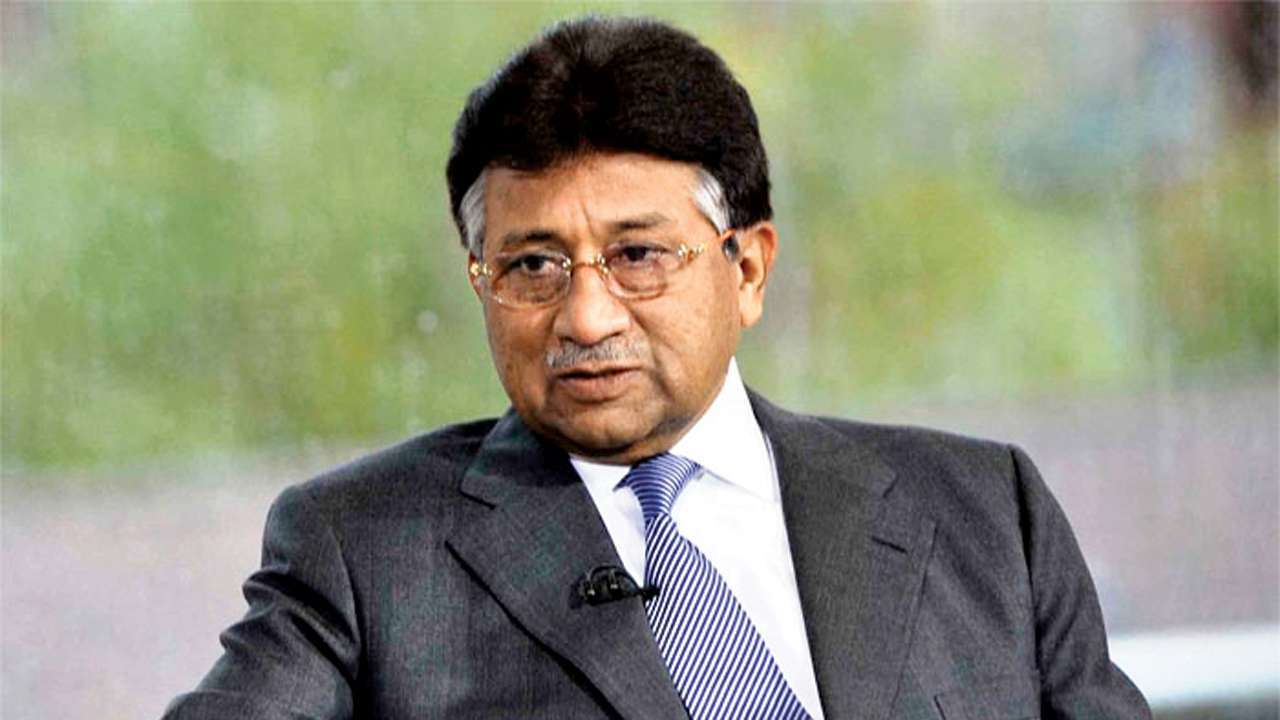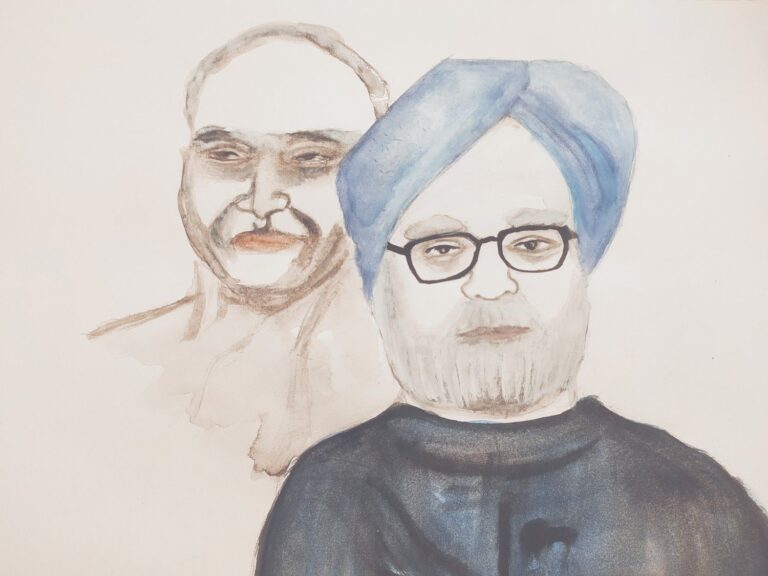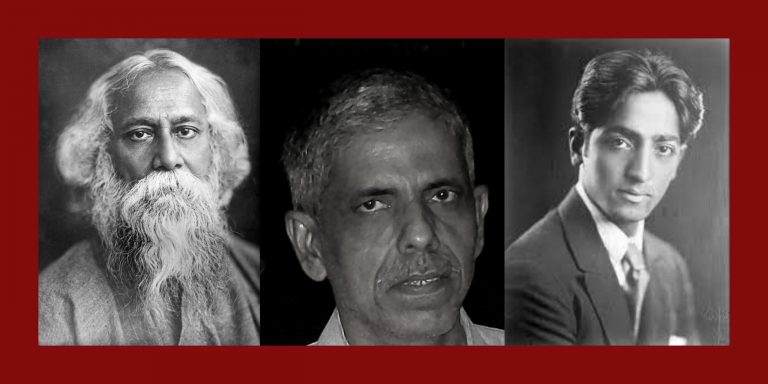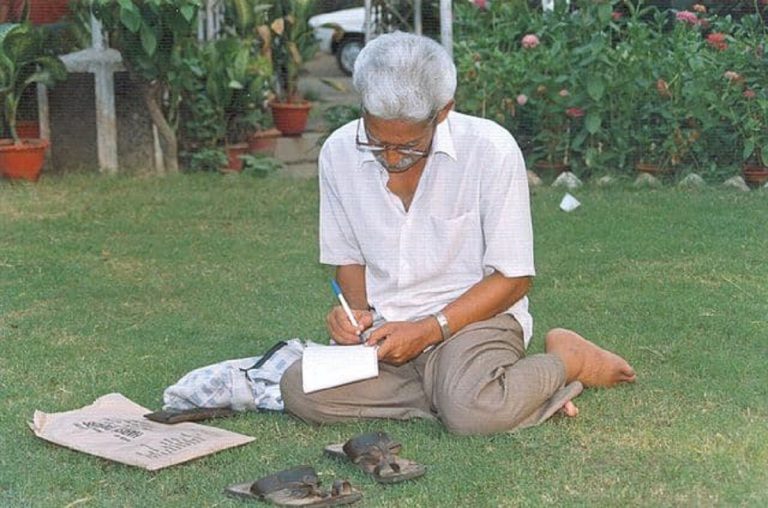Pervez Musharraf: The last military ruler of Pakistan

Former Pakistani Army Chief and President, General Pervez Musharraf passed away on 5th February at Dubai American Hospital in UAE. He died at the age of 79 after suffering from prolonged illness due to a rare disease known as Amyloidosis. His demise offers us the opportunity to have a look at the topsy-turvy nature of the relationship between India and Pakistan during his time. Musharraf is perhaps the only military ruler of Pakistan who came closest to solving the Kashmir dispute with India but history will also remember him as the brain behind the Kargil War in 1999. In a way, Musharraf personified one of the perennial features of interactions between India and Pakistan which is – unpredictability. The shoot-and-scoot military dictator of Pakistan kept altering his stance towards India as per the contextual exigencies.
This article sheds light on some of the landmark events that catapulted Musharraf to positions of power in Pakistan and how India-Pakistan relations played out under his supervision.
Appointment as Army Chief
Born in Old Delhi in 1943, Musharraf and his family migrated to Pakistan in 1947 and settled in Karachi. After staying in Turkey for around 8 years owing to his father’s job commitments as a junior official in the Pakistan Foreign Office, Musharraf returned to study in Karachi and later on joined the Forman Christian College in Lahore. He was commissioned in the Pakistan Army in 1964, after passing out from the Pakistan Military Academy.
Within a few years of service, Musharraf made it to the Special Services Group (SSG) as a commando and would later go on to become the Commander of a new brigade in SSG. After serving in various positions in the Army including the prestigious Corps Commander of the I Corps in Mangla1, the most significant moment in Musharraf’s Army career came in 1998 when he was appointed as the Army Chief by Prime Minister Nawaz Sharif who forced incumbent Jehangir Keramat to resign and superseded two senior generals in the Army to do so. Sharif had assumed that Musharraf being a Mujahir would pose a lesser threat to his rule than any other Punjabi or Pashto Army Chief.2 He would soon find out that his assumption was grossly incorrect.
Orchestrating War
After India and Pakistan tested their nuclear weapons in May 1998, there were glimmers of hope that stability would prevail over the conflictual relationship between the two nations. The huge destructive potential of nuclear weapons made war a risky option for achieving foreign policy objectives. This optimism became pronounced after the Lahore Declaration of February 1999 when an Indian delegation led by Prime Minister Atal Bihari Vajpayee traveled to Lahore in a bus and met Nawaz Sharif, the Prime Minister of Pakistan. Both sides agreed to solve their outstanding disputes peacefully and bilaterally keeping in line with the ‘letter and spirit’ of the Shimla Agreement of 1972.3 However, all such hopes for peace were dashed when it became clear that regulars from the Pakistani Army had occupied posts within the Indian territory in the heights of Kargil sector of LoC (Line of Control) which were vacated during the winter. Once again it was the Pakistan Army, the most powerful organization in the country that had come in the way of a peaceful relationship between India and Pakistan with General Pervez Musharraf being at the helm of affairs.
Kargil was the brainchild of Pervez Musharraf who wanted to revive the waning insurgency in Kashmir during the late 1990s and also exploit Pakistan’s overt nuclear power status to deter a conventional war by India as well as invite intervention by the US in the Kashmir dispute by portraying the region as a nuclear flashpoint. Musharraf also planned for Kargil to avenge the loss of Siachen to India in 1984. Siachen is still considered a military setback by Pakistan, a subject that hurts, even though it is not mentioned in public.4 Musharraf had on several occasions made futile attempts to change the status quo in Siachen in 1987 when he was holding the position of brigade commander in SSG. He thought that the heights of Kargil presented the best opportunity for Pakistan to interdict the road NH 1-A, the only highway linking Srinagar to Leh, as a result of which the Indian troops guarding Siachen would be starved of food, ammunition, and other logistics.5
In his autobiography titled In the Line of Fire: A Memoir, Musharraf presents us with a different version of the Kargil War, where he argues that Pakistani forces (FCNA and Rawalpindi Corps) were moved in plug gaps along the LoC through which the Indians were planning to conduct offensive operations in the Northern areas of Pakistan.6 He maintained the war was actually fought between the Indian armed forces and the ‘freedom fighters’ of Kashmir with occasional skirmishes that involved the Pakistan Army. It remains unclear though why India would choose to go for an offensive in the Northern Areas when relative calm had settled in the bilateral relationship between the two countries following the nuclear tests of 1998. Personal diaries and identity cards of soldiers recovered after the war point to the fact that regular soldiers of the Pakistan Army (the Northern Light Infantry) were fighting in Kargil in the garb of Mujahideen.
Soon after taking over as Army Chief, Pervez Musharraf made some quick changes in the top echelons of the Army. He drafted Lieutenant General Mehmood Ahmad as GOC 10 Corps that was responsible for all Army deployments in PoK (Pakistan Occupied Kashmir). He also appointed Lieutenant General Mohammad Aziz Khan as Chief of General Staff. These appointments were made by keeping in mind the plan of Kargil.7 It is said that the Pakistan Army was carrying out logistic and reconnaissance preparations just when preparations for the Lahore meeting were on the way. When Vajpayee visited Lahore, Musharraf looked hesitant to greet him. Soon after the Lahore Declaration was signed, the Pakistan Army Chief flew across LoC to oversee the progress of the ‘advance elements’ who were to be a part of Operation Badr. He was in no mood to allow the Army to get carried away by the Lahore Declaration. Musharraf had kept the plan of Operation Badr a top secret and it was not even shared with the Pakistan Navy and Airforce.8
Even though the Pakistani infiltration in Kargil was able to surprise India in the initial phases, what Musharraf discounted most was the valor and determination of the Indian Army which was ready to go to any extent for regaining the lost positions. India started to gain an upper hand as soon as the Airforce was employed to conduct operations on the Indian side of LoC. The war officially ended on 26th July 1999 after Pakistan had to withdraw its forces following the meeting between Prime Minister Nawaz Sharif and US President Bill Clinton. Needless to say, Kargil proved to be a blunder for Pakistan in terms of calculations and expectations. Musharraf had dragged India into an unnecessary and avoidable war that had claimed the lives of more than five hundred Indian soldiers.
The October 1999 Coup
The Kargil episode had left an enduring impact on civil-military relations in Pakistan which culminated in yet another military coup that brought Musharraf to power initially as the Chief Executive Officer (CEO) and later on as President from 2001-2008. Nawaz Sharif was deposed from power after rifts between him and Musharraf appeared to widen once the Kargil war came to an end. Sharif claimed on several occasions that he had little or no idea of what Musharraf was planning to execute in Kargil. He had outrightly blamed Musharraf for the debacle in the war. Musharraf on his part blamed Sharif for bowing down to the pressure of the USA and ordering the withdrawal of troops from Kargil at a point in time when according to him India was on the back foot. Musharraf also contested Sharif’s accusation of the secretive planning of the Kargil War by stating that the Prime Minister had been briefed about the operations from time to time. The trigger point came when Sharif had attempted to divide the Army by almost replacing Musharraf with General Khawaja Ziauddin as the Army Chief when the former’s return flight from Colombo wasn’t allowed to land in Pakistan. This attempt was thwarted due to the loyalty shown towards Musharraf by officers like Chief of General Staff Mohammad Aziz Khan, Rawalpindi Corps Commander Mahmud Ahmed, and Karachi Corps Commander Usmani.9 These officers launched a counter-coup that saw Musharraf seizing power from Nawaz Sharif in October 1999.
Playing the Role of ‘Peacemaker’
During his stint as the President of Pakistan, Musharraf tried to mend the strained relations with India. This is partially true when one looks at the Agra Summit of 2001, the continuing back-channel negotiations, and the Composite Dialogue Process between India and Pakistan that took place during his rule. But, one also needs to remember the context surrounding such initiatives for peace as Pakistan came under increasing pressure from the US after the 9/11 attacks to join its war efforts in Afghanistan and also to rein in terrorist groups that were active on its soil. Such was the deficit of trust that the Agra Summit failed to produce even a joint declaration by the leaders of the two countries. The Indian side pointed to the reluctance of Musharraf to commit to the aspect of curbing cross-border terrorism and his intransigence to include the Kashmir dispute in the joint statement as the two major reasons for which the summit failed to deliver anything fruitful.10 Even though Musharraf had little room to maneuver, he did extend support to Al-Qaeda by providing them with safe havens in Pakistan.
Musharraf’s duplicity got exposed when terrorists belonging to Jaish-e-Mohammad and Lashkar-e-Toiba attacked the Indian Parliament in December 2001 and this brought the two nuclear-armed countries close to a war. The Indian army mobilization is known as Operation Parakram and pressure from the US-led Musharraf to pledge that he would not allow any terrorist organization to operate against India from Pakistani soil. His promise proved to be a bluff as an Indian Army camp in Kaluchak, Jammu was massacred by terrorists of Lashkar-e-Taiba leading to the death of innocent women and children.11 Notwithstanding his dubious intentions, we must give Musharraf the due share of credit for some of the peace initiatives taken by him as a statesman and the 2003 LoC Ceasefire Agreement attests to this fact. The LoC witnessed minimal ceasefire violations after this agreement from 2003-06. Moreover, the joint statement made by President Musharraf and Prime Minister of India Manmohan Singh during the 2004 SAARC summit in Islamabad unfolded the process of Composite Dialogue.12 This period also saw the inauguration of the bus route between Srinagar and Muzaffarabad in 2005.13
It is also said that Musharraf and Manmohan Singh were almost close to a four-point solution to the Kashmir dispute that proposed the phased demilitarisation of Kashmir without any change in the borders, free movement for the people of Jammu and Kashmir across the LoC, self-governance without independence and a joint supervision mechanism in Jammu and Kashmir involving India, Pakistan, and Kashmir.14 But the four-point formula never saw the light of the day as Musharraf got caught in the domestic political turmoil of Pakistan that ultimately forced him to resign first as the Army Chief in 2007 and then as President in 2008. Some of the decisions taken by him like the proclamation of emergency in 2007, the arrest of Chief Justice Iftikhar Mohammed Chaudhry, the killing of Baloch separatist leader Akbar Khan Bhugti and the military raid in Lal Masjid (Red Mosque) proved to be fatal in terms of his political career.
References
- Musharraf, P. (2006). In the Line of Fire: A Memoir. Simon & Schuster UK Ltd.
- Sood, M. (2016). Chiefs of Nawaz Sharif. Indian Defence Review.
- https://peacemaker.un.org/sites/peacemaker.un.org/files/IN%20PK_990221_The%20Lahore%20Declaration.pdf
- Malik, V.P. (2020). Kargil: From Surprise to Victory. Harper Collins.
- MacDonald, M. (2017). Defeat is an Orphan: How Pakistan Lost the Great South Asian War. Hurst.
- Musharraf, P. (2006). In the Line of Fire: A Memoir. Simon & Schuster UK Ltd.
- Malik, V.P. (2020). Kargil: From Surprise to Victory. Harper Collins.
- Ibid.
- Noor, S.R., “12th October, 1999: Hijacking from the Ground”, The Express Tribune, https://tribune.com.pk/story/2383194/12-oct-1999-hijacking-from-the-ground
- B.S. Reporters. “Terror Stand Led to Agra Failure”, Business Standard, February 6, 2013, https://www.business-standard.com/article/economy-policy/-terror-stand-led-to-agra-failure-106092701095_1.html,
- Krepon, M & Nayak, P. (2006). US Crisis Management in South Asia’s Twin Peaks Crisis. Stimson Center.
- “Pakistan- India Joint Statement”, Dawn, January 7, 2004, https://www.dawn.com/news/403801/pakistan-india-joint-statement
- Patricia, N. “Historic Bus route opened between Indian and Pakistani Kashmir”, Voice of America, October 30, 2009, https://www.voanews.com/a/a-13-2005-04-07-voa10/294635.html
- Express News Service, “Musharraf at Agra Summit: What was his four-point formula on Kashmir issue”, Indian Express, February 7, 2023, https://indianexpress.com/article/political-pulse/pervez-musharraf-agra-summit-india-pakistan-kashmir-8425532/
Featured Image Credits: DNA India








